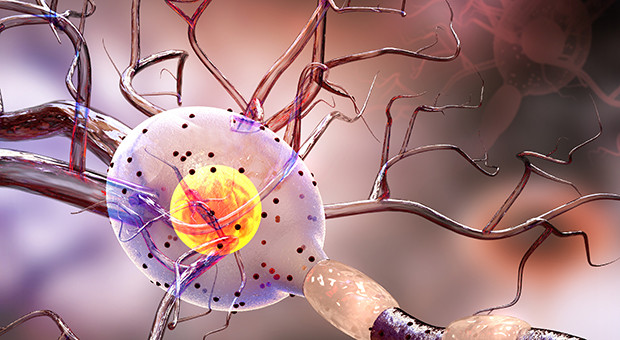Although neurofibromatosis (NF) is not commonly discussed, it affects more than 2 million people worldwide.
“Neurofibromatosis is a group of genetic disorders that predispose people to various kinds of tumors,” said Dr. Kimberly Harbaugh, chief of peripheral nerve surgery at Penn State Health Milton S. Hershey Medical Center. The mostly benign tumors are located in the skin, along the nerves and spinal cord and in the brain.
According to the Children’s Tumor Foundation, neurofibromatosis is more common than cystic fibrosis, Duchenne muscular dystrophy and Huntington’s disease combined. There are three distinct types of NF.
NF-1
In NF-1, patients develop benign tumors called neurofibromas in and under the skin and along their nerves. It occurs in about 1 in 3,000 births and is often diagnosed in infancy. Patients typically have light brown skin spots and may have freckling in their armpit or groin region, bony anomalies involving their skull, spine or shin, or tumors in the brain or along the optic nerves.
“Most patients have a normal life expectancy but in some patients, a benign tumor can convert to a more aggressive or cancerous tumor. For this reason, periodic monitoring is important in these patients,” Harbaugh said.
NF-2
NF-2 is less common occurring in about one in 30,000 births. By definition, NF-2 patients develop benign nerve tumors called schwannomas in a cranial nerve that controls hearing and balance. The schwannomas may also develop in other cranial, spinal and peripheral nerves, and patients may develop other tumors in the brain and along the spinal cord. Although the tumors are benign, their growth within and adjacent to the brain, spinal cord and nerves can cause loss of function such as hearing. This hearing loss often leads to the diagnosis when the patients are young adults.
Schwannomatosis
Schwannomatosis occurs at rates similar to NF-2. These patients also develop schwannomas but not on the same cranial nerve as in NF-2. They are not predisposed to the development of other non-schwannoma tumors. Despite the benign nature of the tumors, these patients often have difficulty with chronic pain. As in NF-1 and NF-2, benign tumors can become problematic due to growth within and around normal nerves, the spinal cord and brain.
Currently there is no cure for NF although research is ongoing.
“You can’t treat the disease because you can’t fix the gene,” Harbaugh said. “You’re really only treating the symptoms of the disorder.”
Because the severity of the disease varies, patients are monitored and treated on a case-by-case and tumor-by-tumor basis.
“Because the tumors grow in normal nervous tissue, there is a risk that if you take one out, the patient may develop weakness, numbness or pain,” Harbaugh said. “If one grows rapidly, becomes painful or starts to create a neurological deficit, then we consider removing it.”
Malignant tumors are sometimes treated with chemotherapy or radiation, although those treatments usually aren’t effective.
Because the number of neurofibromatosis cases is rising worldwide, the need for specialty clinics is growing.
The Milton S. Hershey Medical Center recently established a multidisciplinary Adult NF Clinic to assist the more than 500 patients who are currently treated at the facility. (To learn more about the clinic, call 717-531-3828 or 1-800-243-1455.)
“By having a clinic to go to, they know that the physicians here understand neurofibromatosis,” she said. “Our patients get better care because we can make sure they get referred to the appropriate clinicians.”
The Medical Center is also looking to add a pediatric neurofibromatosis clinic.
Learn more:
For more information on neurofibromatosis, visithttp://www.nfmidatlantic.org or http://www.ctf.org.
The Medical Minute is a weekly health news feature produced by Penn State Health Milton S. Hershey Medical Center. Articles feature the expertise of faculty physicians and staff, and are designed to offer timely, relevant health information of interest to a broad audience.



